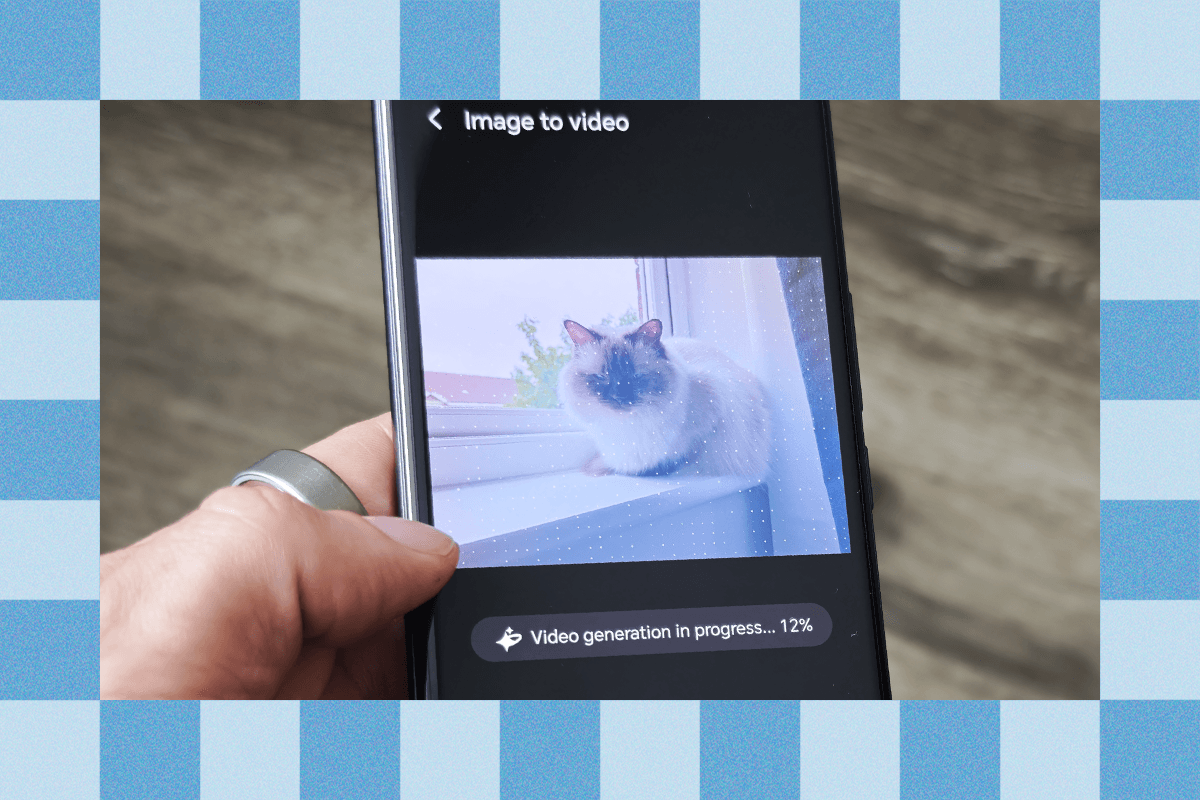All products featured on WIRED are independently selected by our editors. However, we may receive compensation from retailers and/or from purchases of products through these links.
As midrange phones designed to plug the gap between flagships, the Honor 400 and 400 Pro might not ordinarily attract much attention. But these devices—unavailable in the US—are among the first to feature Google’s image-to-video AI generator, based on its Veo 2 model (now available to Gemini subscribers). Built into Honor’s Gallery app, you can select a still photo from your camera roll to bring it to life as a five-second video.
After much experimentation with different photos, from landscapes to family and pets, I’m impressed and weirded out. Like any AI tool, it has the potential to be good or bad, depending on how you wield it, and the results veer from flawless to freaky. It’s a neat trick, and it’s coming to the phone in your hand soon.
Fake Photography
Faking photography is nothing new—the medium is always evolving. Artificial intelligence has been smoothing wrinkles and enhancing skies for years. None of your photos are real, especially those you shot with your phone and edited to post on social media. But we’re pushing beyond creating a fake bokeh background blur or dialing up colors of the sunset. Creating entirely fake videos from still images feels like a new high and a new low.
The process is easy. Open the Gallery app on the Honor 400 or 400 Pro, choose the Create tab, tap Image to video, and select one of your photos. Choose a 9:16 or 16:9 aspect ratio for portrait or landscape, then hit start. You need to be connected to the internet. Each five-second video took around 30 seconds to create, but a pop-up message warns me they can take up to two minutes. There’s no room to enter a prompt, so you are left at the mercy of whatever the AI decides to do.
I began with photos of my wife and kids. The first few videos have a major uncanny valley feel. In one photo, my wife is covering her mouth, and the AI animates her moving her hand and talking, but the mouth it pastes in is entirely wrong. Much to her horror, it gives my daughter a series of facial tics. The video of my selfie comes out well and would surely fool anyone who doesn’t know me, but my wife says she can tell it’s not me because I never make facial expressions like that.
Courtesy of Simon Hill
We tried the cats next, and despite some odd expressions (my eldest cat, Bodhi, never looks as deferential as this), the results were pretty solid. Photos of landscapes, such as a boat on the waves or trees in a forest, are brought to life with believable rippling effects. Things got weirder with inanimate objects. With a pair of Star Wars Funko Pops, Anakin Skywalker’s lightsaber glowed to life, but Darth Maul on a speeder weirdly rotated on the spot. For a few photos of ornaments, it did a disappointing pan or zoom.
Courtesy of Simon Hill
Courtesy of Simon Hill
As the debate about AI-generated art rages on, I can’t help but wonder at the implications of uploading personal photos to be analyzed and animated by ever more powerful AI. Social media is already awash with carefully edited photos and videos, but AI processing is improving fast, generating more believable results with every passing day, and it’s quickly becoming accessible to everyone.
Camera Cold War
Photography is the battleground for phone manufacturers trying to outdo one another. While most phone makers focused on hardware, Google dived deeper into computational photography, doing more with less. Google pioneered and popularized AI features in its Pixel phones. Options like AI Eraser to remove unwanted items or people from photos and AI-enhanced zoom to create more detailed zoomed shots from afar with underpowered hardware are fast becoming ubiquitous, and both work well on Honor’s latest phones.
Google has already moved on with Pixel 9 features like Best Take, enabling you to pick smiling faces where everyone has their eyes open from different shots, and Add Me, allowing you to take group photos and then add yourself to them. Securing buy-in for this brave new world of AI photography is clearly important, as Google aims to pull big Android phone manufacturers aboard, carefully balancing exclusive Pixel features with debuts for companies like Honor.
Honor is creeping closer to marrying hardware and software in the 400 Pro. It has a triple-lens main camera comprising a 200-megapixel main shooter with a large 1/1.4-inch sensor, a 50-megapixel telephoto lens, and a 12-megapixel ultrawide, not to mention a 50-MP selfie camera. Honor has also bet big on AI in recent years, pushing more AI into its phones, working closely with Google, and showing off its own new AI features. The Chinese phone maker has come a long way from beauty filters that smooth out your wrinkles, though those are still available.
The generate button has a label that says “Limited-time free trial.” Honor 400 buyers get two free months and can generate up to 10 videos a day. Presumably, this will eventually be a paid feature of Google’s Gemini Pro subscription and will roll out on many more phones (there’s no firm timeline or pricing yet). It’s a win-win for Google when it owns the underlying AI, enticing you to subscribe down the line. It’s fun to play with—we exhausted our daily allowance fast—but seriously creepy.




